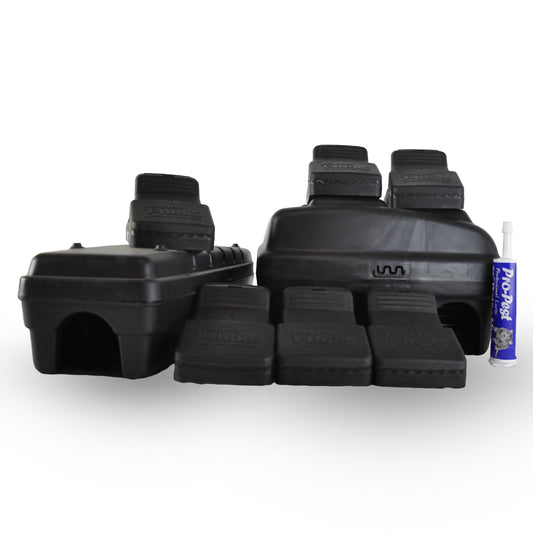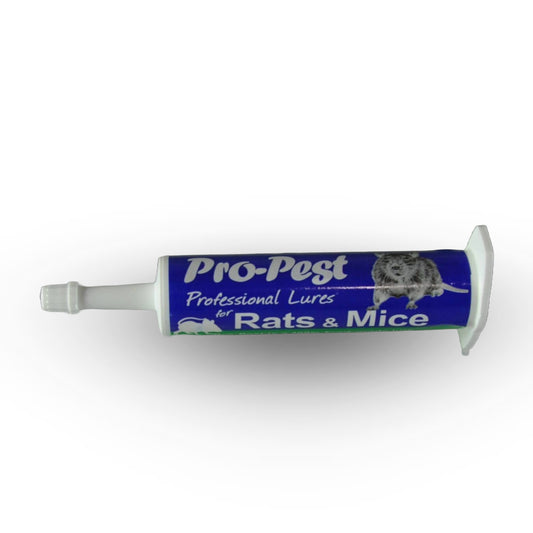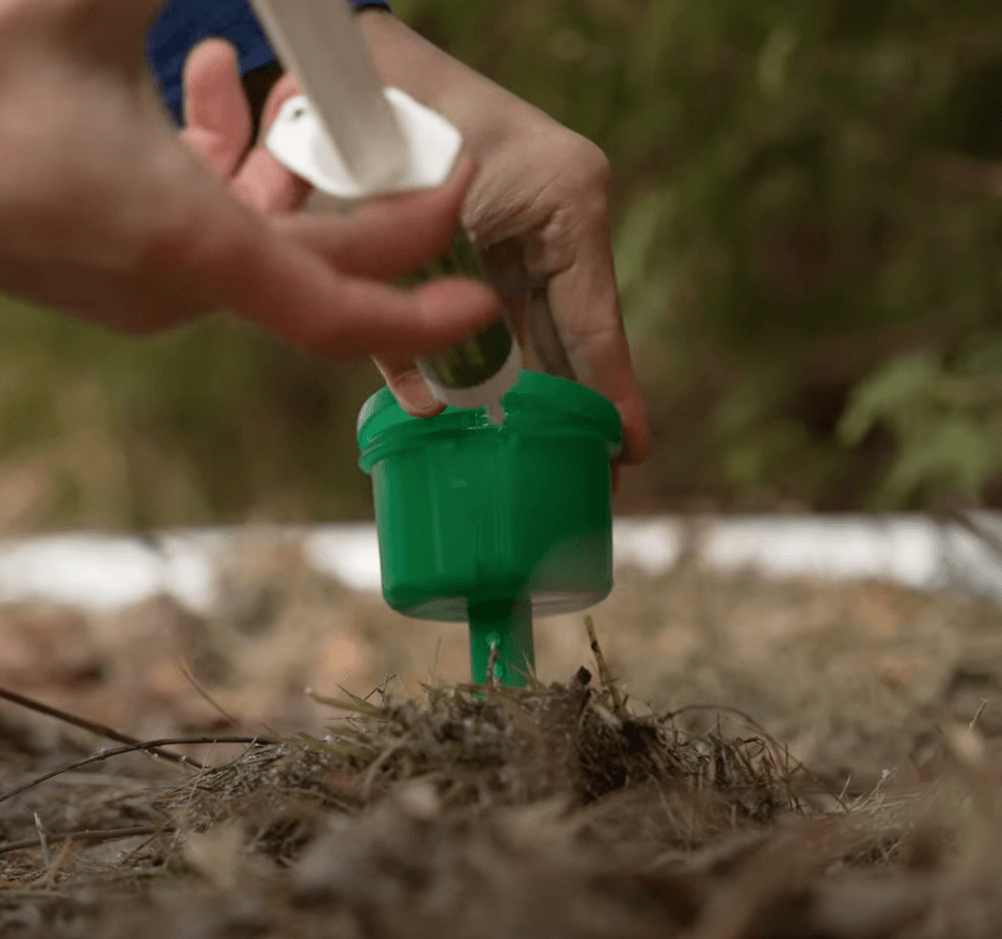
Signs of presence ⌵

General description ⌵

How to get rid of it ⌵

Dangers and damage ⌵
Signs of rats
Rats leave several clear signs of their presence, but care must be taken not to confuse them with the presence of mice. Here are signs specific to rats indicating that they are present in the environment in question:
1. Rat droppings
Rat droppings, often the size of a grain of rice and dark in color, are usually found near food sources or in areas of activity such as cabinets, under sinks or behind appliances. A rat can produce up to 40 to 50 droppings per day, which accumulate in nesting areas and indicate an active infestation.
2. Gnaw marks
Rats gnaw continuously to wear down their teeth, and you will often see bite marks on food packaging, electrical cables and woodwork. Gnaw marks, which are larger than those of mice, can indicate a rat presence, especially if wires or wooden structures suffer repeated damage.
3. Nests made of shredded materials
Rats build their nests in inconspicuous, dark places using materials like paper, cardboard and fabric. These nests are often found in attics, behind appliances, or between walls, near heat and food sources.
4. Scratching and shifting noises
Being nocturnal, rats are active at night, which can cause scratching noises in walls, ceilings or floors. These sounds are often heard during the quieter hours of the night and may also include slight, short, high-pitched screams.
5. Unpleasant smell
A strong ammonia or musky odor is often present in spaces infested by rats, especially where they have established their nest. This distinct odor, which comes from urine and feces, accumulates and becomes noticeable when the infestation is major.
6. Grease marks and paw prints
As they move along walls, rats leave traces of grease on the surfaces they regularly brush against. You might also see paw and tail prints in areas with dust, which confirms their frequent passage in certain areas.
It is important to know that the signs of the presence of mice and rats are similar, but that the signs, when they come from rats, are larger and more pronounced. For example, droppings are larger, scratching sounds are heavier, and gnaw marks are larger in rats.
General description of rats
Rats, especially common species like the brown rat and roof rat, are small, omnivorous rodents that thrive in human-occupied environments. Measuring approximately 20 to 30 cm long, excluding the tail, they have a brown or gray coat, a pointed snout, thin ears and a long scaly tail. Their compact body structure, agile legs, and sharp teeth make them suitable for a wide range of environments, from cities to fields, and even industrial areas.
Originally from Asia, rats have spread across the world following human transportation routes, such as ships, colonizing almost all continents. Quickly adapting and resilient, they survive in a wide variety of environments by feeding on waste, grains, insects, and other small animals. The brown rat, in particular, prefers cooler areas and is often seen in basements and sewers, while the black rat prefers warmer climates and is an excellent climber, frequenting attics and roofs.
Rats are also recognized for their historical impact and role as vectors of diseases, such as leptospirosis, murine typhus and, historically, plague. Due to their speed of reproduction and their ability to sneak into inaccessible corners, they are difficult pests to control in urban and agricultural areas.
How to get rid of rats:
If you have spotted rats in your home, it is normal to want quick and effective solutions. Although they can cause serious material and health damage, there are several ways to eliminate rats independently. Here is a complete guide to getting rid of rats using prevention and treatment products available from Lexterminateur en ligne, accompanied by practical advice.
1. Using rat traps
Traps are a traditional and effective method for controlling small rat populations. You have several options:
- Snap traps : These traps are very common and effective for capturing rats quickly. Place them along walls where rats often circulate.
- Sticky traps : Effective, but less recommended, as they can cause suffering to animals. Their use is mainly justified in critical areas and without other options.
- Humane traps : There are also traps that capture rats alive, allowing you to release them far from your home. However, this does not guarantee that they will not return
2. Safe baits and rodenticides
Poison baits are another option, but they require careful handling. They should be placed in secure stations to avoid any risk to children or pets. You can find enclosed bait stations that protect against accidents while still being effective against rodents.
Be sure to follow rodenticide product instructions to maximize their effectiveness while minimizing the risk of secondary contamination.
3. Plug the entry points
Rats can get in through openings as small as a 1.5 cm hole. Identify potential entry points around your home, such as cracks, holes in walls, or gaps around pipes, and seal them with sturdy materials like metal, rodent-proof copper mesh , or heavy-duty caulking.
6. Maintain rigorous cleanliness
Rats are attracted to food and water. To prevent them from finding food in your home:
- Store food in airtight containers .
- Remove crumbs and clean under appliances regularly .
- Keep trash cans tightly closed with tight-fitting lids.
7. Treatment products available online
At Lexterminateur en ligne , you will find a wide range of products to manage a rat infestation. We offer secure bait stations , traps and repellents that will help you control the problem.
In short
Getting rid of rats requires a combination of trapping, baiting and prevention measures. By following these tips and using the products available on our site, you can effectively solve the problem and prevent rats from coming back.
The dangers and damage caused by rats
Rats pose significant risks to human health and also cause significant property damage. Here's an overview of the main dangers associated with rats.
1. Health risks
Rats are vectors of many serious diseases that can be transmitted to humans. For example, they can spread leptospirosis through their urine, a bacterial infection that can cause symptoms such as fever, muscle aches, and serious kidney complications if left untreated. They can also transmit salmonellosis, hantavirus, and rat-bite fever, an infection that can manifest as vomiting and muscle aches. These diseases can be contracted through contact with rat droppings, urine, or saliva, or through bites or scratches. In addition, rats often carry parasites, such as fleas, which can themselves carry additional diseases such as plague. Simply handling infested areas can expose residents to significant health risks.
2. Material damage
Rats are known for their gnawing habits that cause significant property damage. They chew on materials like wood, plastic, and electrical wiring, which can cause short circuits, fires, and costly damage to home electrical systems. Their gnawing activities can also cause water infiltration and structural damage when they burrow into foundations or walls.
3. Contamination and nuisances
Rat droppings, often scattered throughout living and food storage areas, contaminate surfaces and food, making them unsafe to eat. These debris can release allergens into the air, contributing to respiratory problems and exacerbating allergies. In addition to the risk of contamination, the presence of rats creates unpleasant odors, especially if a rat dies in a hard-to-reach space, which may require extensive cleaning.
Due to these risks, it is essential to take preventative measures and, in the event of an infestation, to call on professional pest control services to ensure the health and material safety of your environment.
With the purchase of a reusable half-mask respirator , get a 10% discount on the 3M vapor cartridge .
Discount code: 6TZJ
de rabais
10%
With the purchase of a Webster Cobweb brush , get a 10% discount on the Webster Cobweb extendable pole .
Discount code: DTSQ
de rabais
30%
With the purchase of a FlowZone backpack sprayer , get a 30% discount on complementary FlowZone products .
Discount code: A29B
de rabais
25%
With the purchase of the Catchmaster Ovi-Planter Ago mosquito trap , get a 25% discount on an Ungava brand mosquito repellent .
Discount code: UH5T
de rabais
25%
With the purchase of the Catchmaster Ovi-Catch Ago mosquito trap, get a 25% discount on an Ungava brand mosquito repellent .
Discount code: UH5T
de rabais
15%
With the purchase of the Envirolights JR fly light trap , get a 15% discount on the Catchmaster Flylight JR sticky panel .
Discount code: ZN7G
Best Sellers
-

 Sale
SaleAll-in-one rat kit
Regular price $94.00 USDRegular priceUnit price per$111.00 USDSale price $94.00 USDSale -
JAWZ, Professional Rat Traps
Regular price $6.00 USDRegular priceUnit price per$7.00 USDSale price $6.00 USDSale -
T-REX, Trap for Rats and Other Rodents
Regular price $9.00 USDRegular priceUnit price per -
T-Rex IQ Trapper Trap for Rats with IQ2000 Sensors
Regular price $30.00 USDRegular priceUnit price per

Find your solution
Do you have a pest in your home but you don't know what solution to use to get rid of it? Just answer a few questions, and you will get your solution.












